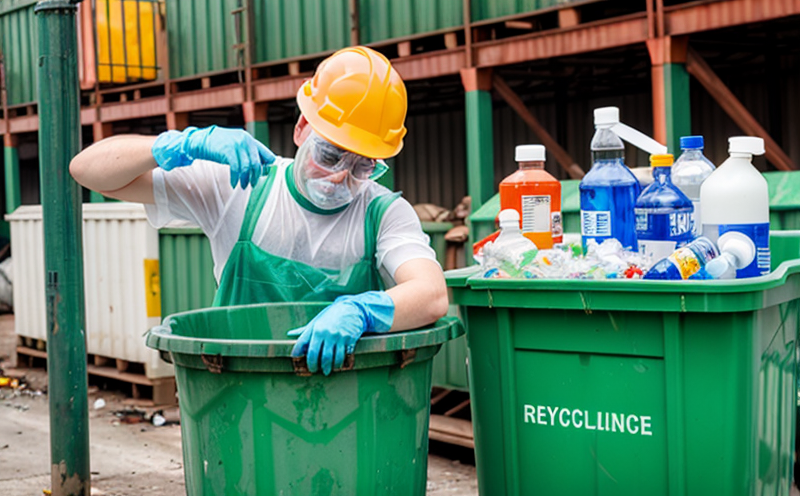EPA 1312 Synthetic Precipitation Leaching Testing
The EPA 1312 Synthetic Precipitation Leaching (SPL) Test is a crucial method used to assess the leachability of contaminants from waste materials, particularly those intended for disposal or recycling. This test is essential in ensuring that waste materials meet regulatory standards set forth by the Environmental Protection Agency (EPA). The SPL test simulates the conditions under which waste might be exposed to water during landfilling, incineration, or other environmental processes.
The primary objective of this testing method is to predict the potential for contamination of groundwater and surface waters. By conducting this test, stakeholders can determine whether waste materials are suitable for landfills that meet specific criteria set by regulatory bodies like the EPA. This information is vital for compliance with various environmental laws and regulations, such as RCRA (Resource Conservation and Recovery Act).
The synthetic precipitation leaching method involves exposing a sample to an acidic solution similar to that found in natural environments. The test aims at extracting any potentially harmful substances from the waste material through leaching. After the extraction process, analysts measure the concentration of contaminants present in the leachate.
Understanding the results of this test helps in selecting appropriate waste management strategies and technologies. For instance, if a waste stream consistently fails the SPL test, it may indicate a need for pretreatment or alternative disposal methods to ensure compliance with stringent environmental standards. This testing is particularly important when dealing with hazardous wastes that could pose significant risks to human health and the environment.
The EPA 1312 SPL Test plays an integral role in the waste management sector by providing critical data needed for regulatory compliance, risk assessment, and informed decision-making regarding waste treatment options. By ensuring that waste materials meet stringent leachability criteria, this test supports sustainable practices and helps protect natural resources.
The application of the EPA 1312 SPL Test extends beyond mere compliance; it also serves as a tool for research and development in the field of environmental science. Researchers can use these results to refine existing waste management techniques or develop new approaches aimed at reducing contaminant release into the environment.
Applied Standards
The EPA 1312 Synthetic Precipitation Leaching Test is primarily governed by the EPA's guidelines for SPL testing. Additionally, this method aligns with international standards such as ISO and ASTM specifications, which provide further guidance on appropriate methodologies.
The test follows a standardized procedure that ensures consistency across different laboratories. Key steps include sample preparation, leaching process, extraction of leachate, and analysis using various analytical techniques to determine contaminant concentrations.
Scope and Methodology
| Step | Description |
|---|---|
| Sample Preparation | The sample is ground into a fine powder to ensure uniform contact with the leaching solution. This step is critical for accurate results. |
| Leaching Process | The prepared sample is mixed with an acidic solution, simulating natural conditions in landfills or incineration sites. The mixture is agitated and allowed to stand for a specified period. |
| Extraction of Leachate | The leachate is filtered and analyzed using various analytical techniques to measure contaminant concentrations. |
| Analysis | Contaminants are identified and quantified, providing insights into the potential for groundwater contamination. |
Why Choose This Test
- Predicts the potential for contaminant release during waste disposal or recycling processes.
- Ensures compliance with stringent environmental regulations such as RCRA and EU waste directives.
- Provides valuable data for waste management strategies and technology development.
- Supports sustainable practices by minimizing environmental impact from waste materials.
- Aids in selecting appropriate waste treatment methods to ensure compliance with regulatory standards.
- Offers a standardized approach that ensures consistent results across different laboratories.
- Facilitates informed decision-making regarding waste disposal options.





